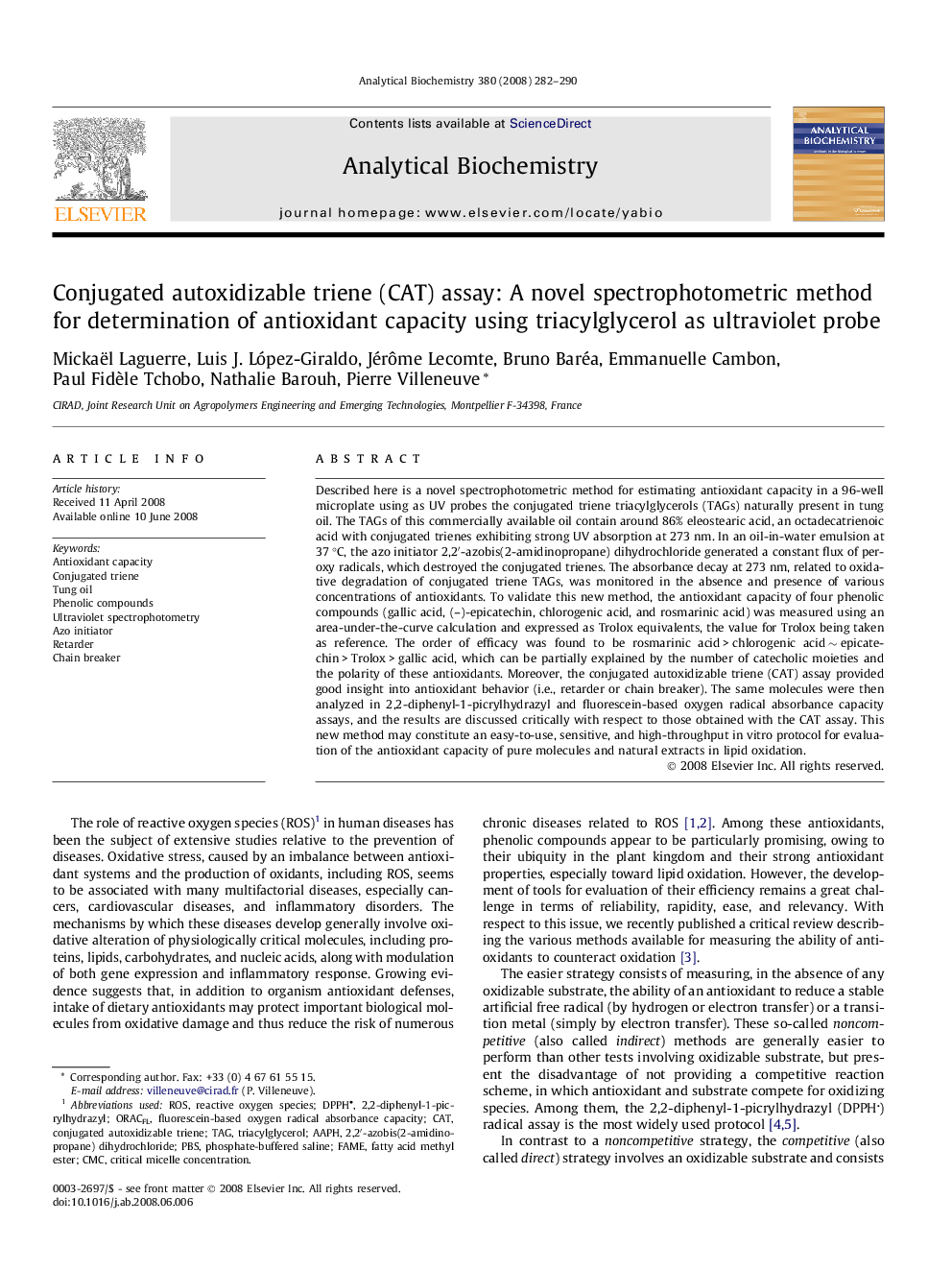| Article ID | Journal | Published Year | Pages | File Type |
|---|---|---|---|---|
| 1177163 | Analytical Biochemistry | 2008 | 9 Pages |
Described here is a novel spectrophotometric method for estimating antioxidant capacity in a 96-well microplate using as UV probes the conjugated triene triacylglycerols (TAGs) naturally present in tung oil. The TAGs of this commercially available oil contain around 86% eleostearic acid, an octadecatrienoic acid with conjugated trienes exhibiting strong UV absorption at 273 nm. In an oil-in-water emulsion at 37 °C, the azo initiator 2,2′-azobis(2-amidinopropane) dihydrochloride generated a constant flux of peroxy radicals, which destroyed the conjugated trienes. The absorbance decay at 273 nm, related to oxidative degradation of conjugated triene TAGs, was monitored in the absence and presence of various concentrations of antioxidants. To validate this new method, the antioxidant capacity of four phenolic compounds (gallic acid, (–)-epicatechin, chlorogenic acid, and rosmarinic acid) was measured using an area-under-the-curve calculation and expressed as Trolox equivalents, the value for Trolox being taken as reference. The order of efficacy was found to be rosmarinic acid > chlorogenic acid ∼ epicatechin > Trolox > gallic acid, which can be partially explained by the number of catecholic moieties and the polarity of these antioxidants. Moreover, the conjugated autoxidizable triene (CAT) assay provided good insight into antioxidant behavior (i.e., retarder or chain breaker). The same molecules were then analyzed in 2,2-diphenyl-1-picrylhydrazyl and fluorescein-based oxygen radical absorbance capacity assays, and the results are discussed critically with respect to those obtained with the CAT assay. This new method may constitute an easy-to-use, sensitive, and high-throughput in vitro protocol for evaluation of the antioxidant capacity of pure molecules and natural extracts in lipid oxidation.
